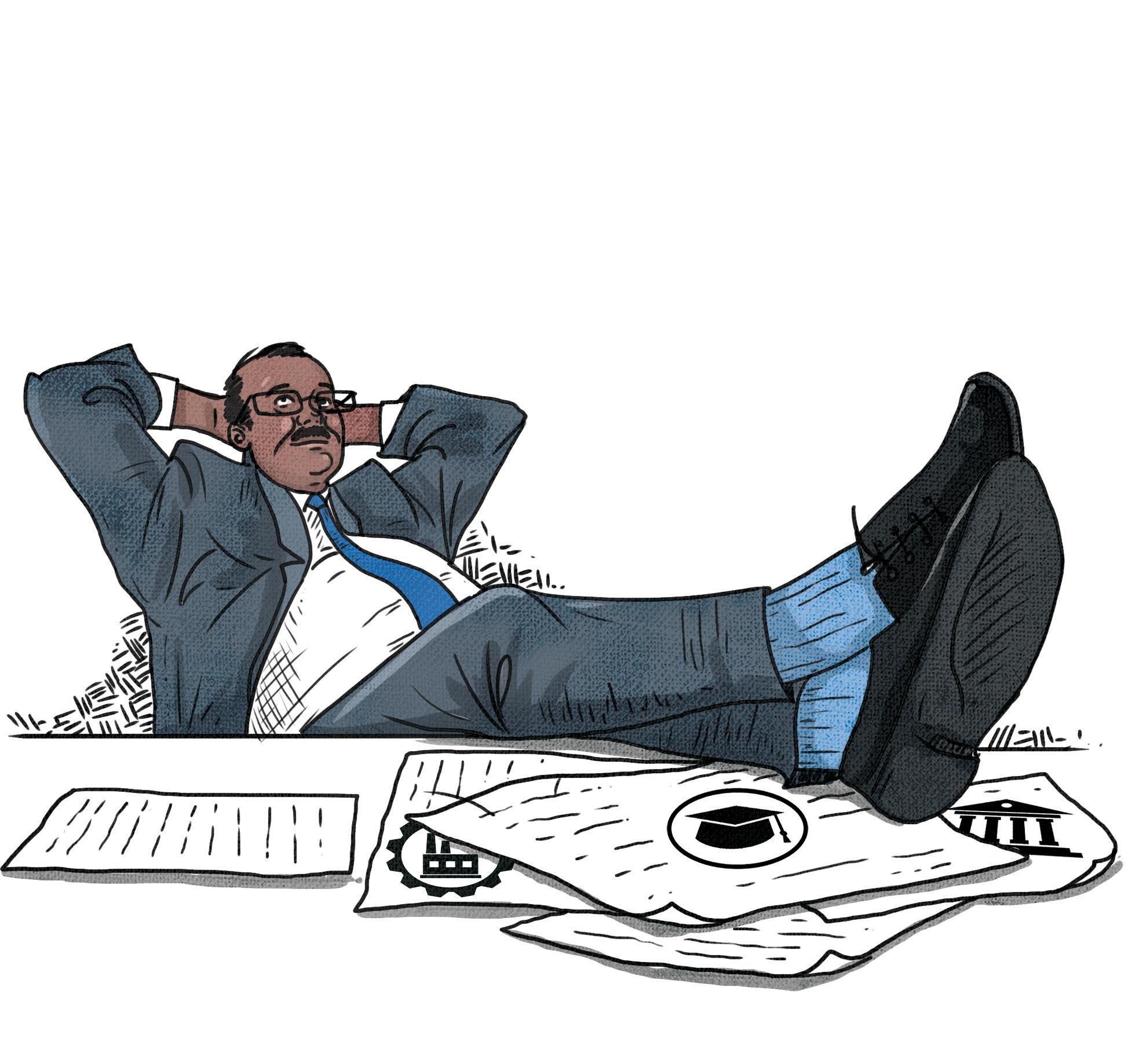
SCIENTIFIC RESEARCH and innovation is finally finding a place, or appears to figure in Prime Minister Narendra Modi’s list of priorities, after the first two terms of his Bharatiya Janata Party (bjp) government were wasted in pandering to irrational beliefs and propagating religious myths that were even foisted on the prestigious Indian Science Congress. The Congress, an annual event held every year since 1914 that draws globally renowned scientists to its conclave, was scrapped this year by the government, which has done little to hide its disdain for scientists and their spirit of rational inquiry and discovery. It is with curiosity and hope, therefore, that the government’s attempts to restructure research goals since late last year have been watched by the community and by anyone with a keen interest in pushing the boundaries of scientific inquiry and innovation. As anyone with a passing interest in this field knows, research has become ossified in India’s vast network of public research laboratories and was desperately in need of a new direction to inject a sense dynamism into it.
In August 2023, the government notified its most ambitious attempt at reforming the scientific research framework by establishing the Anusandhan National Research Foundation (anrf) through an Act of Parliament. It repealed the Science and Engineering Research Board Act of 2008 and simultaneously dissolved the Science and Engineering Research Board that was set up under it. The idea was to recast the research landscape by outlining strategic directions and encouraging collaboration between industry, academia and government departments. It was a welcome move except for the big omissions; funding for one. anrf comes with a promise of generous support, but the bulk of the R50,000 crore budgeted for 2023-28, that is, R36,000 crore, has to be raised from private sources, primarily industry and philanthropists.
Denne historien er fra November 01, 2024-utgaven av Down To Earth.
Start din 7-dagers gratis prøveperiode på Magzter GOLD for å få tilgang til tusenvis av utvalgte premiumhistorier og 9000+ magasiner og aviser.
Allerede abonnent ? Logg på
Denne historien er fra November 01, 2024-utgaven av Down To Earth.
Start din 7-dagers gratis prøveperiode på Magzter GOLD for å få tilgang til tusenvis av utvalgte premiumhistorier og 9000+ magasiner og aviser.
Allerede abonnent? Logg på

In leading role again
MOVIES AND WEB SERIES ARE ONCE AGAIN BEING SET IN RUSTIC BACKGROUNDS, INDICATING A RECONNECT BETWEEN CINEMA AND THE COUNTRYSIDE

One Nation One Subscription comes at a huge cost
As top US universities scrap big deals with top scientific publishers, India’s ONOS scheme seems flawed and outdated

Return of Rambhog
Bid to revive and sell the aromatic indigenous paddy variety has led to substantial profits for farmers in Uttar Pradesh's Terai region

Scarred by mining
Natural springs of Kashmir drying up due to illegal riverbed mining

Human-to-human spread a mutation away
CANADA IN mid-November confirmed its first human case of avian influenza, with a teenager in the British Columbia being hospitalised after contracting the H5N1 virus that causes the disease. The patient developed a severe form of the disease, also called bird flu, and had respiratory issues. There was no known cause of transmission.

True rehabilitation
Residents of Madhya Pradesh's Kakdi village take relocation as an opportunity to undertake afforestation, develop sustainable practices

INESCAPABLE THREAT
Chemical pollution is the most underrated and underreported risk of the 21st century that threatens all species and regions

THAT NIGHT, 40 YEARS AGO
Bhopal gas disaster is a tragedy that people continue to face

A JOKE, INDEED
A CONFERENCE OF IRRESPONSIBLE PARTIES THAT CREATED AN OPTICAL ILLUSION TO THE REALITY OF A NEW CLIMATE

THINGS FALL APART
THE WORLD HAS MADE PROGRESS IN MITIGATING EMISSIONS AND ADAPTING TO CLIMATE IMPACTS. BUT THE PROGRESS REMAINS GROSSLY INADEQUATE
